Updated on November 11, 2025 by Angelika Klein
The Berghof - of which almost nothing can be seen today - on Obersalzberg was Hitler's second residence and seat of government, the Eagle's Nest was built above the Berghof on the Eagle's Nest as a tea house for the Nazi leadership and their guests. The Obersalzberg Documentation Center was established in the 1990s in place of the former building complex on the Obersalzberg. During my one-week stay in Berchtesgadener Land, I visited the Obersalzberg Documentation and then the Eagle's Nest on one day with my girlfriend.
In this article, you will find out why I can recommend a visit to Dokumentation Obersalzberg without reservation, but less so to the Eagle's Nest. Whether you want to visit one or both of these historic sites, which are among the most visited attractions in Bavaria, depends on your personal interests and preferences. This article is intended to help you decide.
1. Map with Places and Important Information
2. Dokumentation Obersalzberg
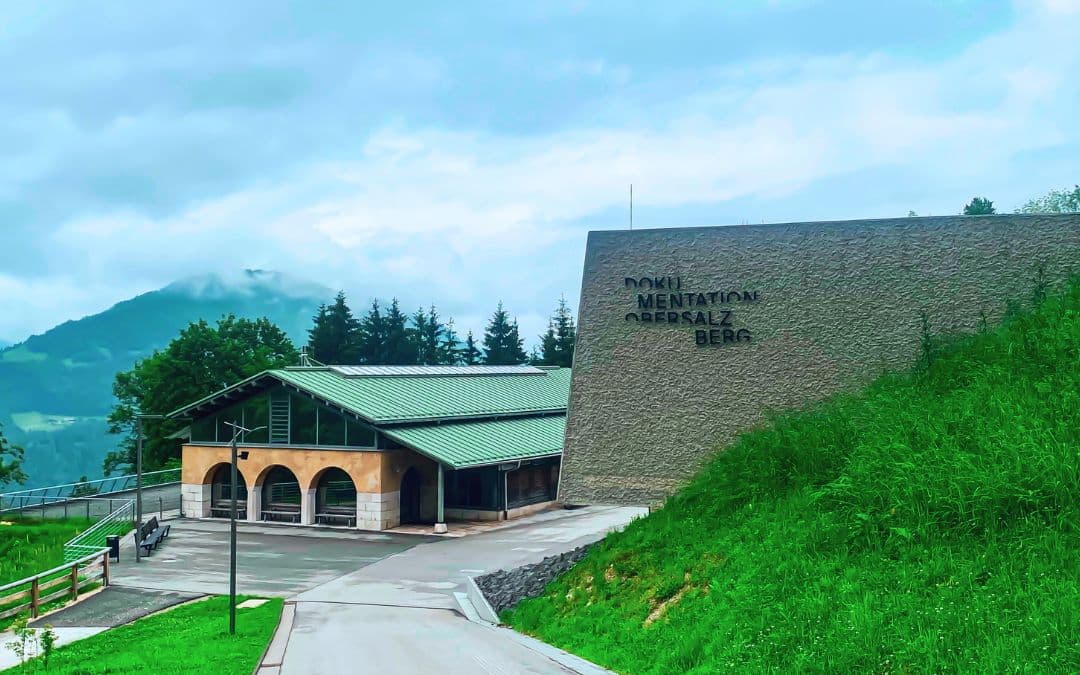
2.1 Historical Background Obersalzberg
The Obersalzberg is picturesquely situated above Berchtesgaden. Adolf Hitler had already been vacationing here in the 1920s and had the village developed into his second residence and seat of government from 1933. He bought the Wachenfeld house, which he had rented since 1928, in 1933. The residents of the mountain village of Obersalzberg were forced to sell their homes or were expropriated. Obersalzberg developed into a center of power for the National Socialist regime. Hitler had a number of buildings erected or converted here, which served not only him but also his closest leaders (such as Hermann Göring, Albert Speer and Martin Bormann) as a place of retreat and planning.
The over 100 hectare "Führer's off-limits area" was inaccessible to the public. Hitler's residence, the Berghof, as well as representative buildings and private accommodation for the Nazi leadership were located here. These buildings are no longer preserved today, but the bunkers still offer an impressive insight into those times.
Obersalzberg is closely linked to the dark chapters of German history. Political decisions were made here and the inhuman ideology of National Socialism was promoted. Most of the complex was destroyed during the bombing raid by the Royal Air Force on April 25, 1945. What was left was set on fire by the retreating SS troops. After the war, some of the buildings were repaired and used by the US Army as a recreation center. The ruins of the other buildings were blown up in 1952 to prevent Obersalzberg from becoming a pilgrimage site for right-wing extremists.
In 1996, the American armed forces withdrew and the use of the area was transferred to the Free State of Bavaria. Now a luxury hotel had been built here - today's Kempinski Hotel Berchtesgaden* - and on the other hand the Dokumentation Obersalzberg as a place of learning and remembrance. The old building could no longer cope with the influx of visitors, so the decision was made in 2013 to expand the exhibition. Bavarian Minister President Markus Söder laid the foundation stone for the exhibition extension back in October 2017. Reopening finally took place in the fall of 2023.
Are you interested in the history of National Socialism in Germany and Austria?
Check out my article on Educational Leave with the Georg-von-Vollmar-Akademie: Insight Guaranteed I present you a journey with the Georg-von-Vollmar-Akademie and Historian and podcaster (Tatort Geschichte) Dr. Hannes Liebrandt from the LMU Munich, who from Berchtesgaden to Linz and Munich leads. At Obersalzberg, we also visited the ruins of the former Berghof.
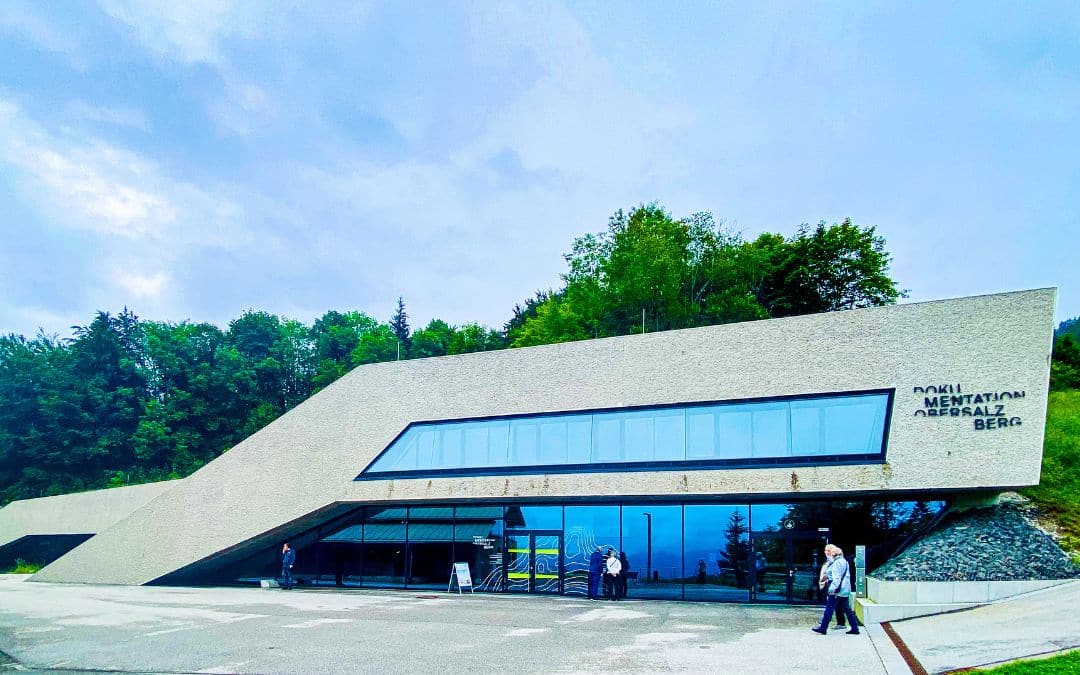
2.2 Visiting Dokumentation Obersalzberg
After years of renovation and a comprehensive redesign, Dokumentation Obersalzberg was reopened on September 27, 2023. The new permanent exhibition is entitled “Idyll and Atrocity” and offers visitors in-depth insights into the history of Obersalzberg during the Nazi era.
The exhibition covers around 800 square meters and has a modern and interactive design. takes visitors on an impressive journey into the past in five chapters (The Obersalzberg stage//"Führer", people and restricted area//Mountain world and world power//Perpetrators' sites and crime scenes//After Hitler). Various stations and multimedia installations shed light on the period between 1933 and 1945, contrasting the idyllic landscape of the Obersalzberg with the crimes planned and committed by the Nazi regime.
The private film footage and photos of Hitler's partner Eva Braun provide remarkable insights into the life of Hitler and his entourage at Obersalzberg. Through original exhibits, historical photos and documents makes tangible how the Nazi perpetrators planned mass murder and war crimes in this isolated world. The invasion of Poland and the Russian campaign, for example, were prepared at Obersalzberg.
An important part of the exhibition are the Themes relating to the ideological background of National Socialism and the actual crimes committedwhich were planned and organized from Obersalzberg. Particularly touching are the personal stories and individual fateswhich are told in the exhibition and which give visitors emotional access to the historical events.
The exhibition concludes with a section of the extensive bunker complexn, which offers visitors an oppressive insight into the underground world of the former "Führer's restricted area". Construction of the bunker system for Hitler and his closest confidants only began in July 1943 - after the heavy air raids on Munich. Until then, Hitler had felt safe at his Berghof. By the time of the air raid on Obersalzberg on April 25, 1945, forced labourers had built six kilometers of corridors and 107 rooms. The graffiti with which some of them immortalized themselves on the walls are still preserved.

2.3 Is a Visit to Dokumentation Obersalzberg Worthwhile?
Dokumentation Obersalzberg offers visitors the opportunity to engage intensively with the past and understand the mechanisms that led to the horrors of National Socialism. Critical reflection on responsibility and the lessons that must be learned from this dark period of history is particularly important.
The comprehensive presentation of historical events and the inclusion of personal stories make the exhibition an emotional experience that leaves a lasting impression. It encourages people to think about the dangers of totalitarianism, racism and anti-Semitism and their impact on the present and the future.
Compared to other perpetrator sites such as the former Nazi Party Rally Grounds in Nuremberg or the exhibition Topography of Terror in Berlin, Dokumentation Obersalzberg offers a unique perspective on the private and social life of the Nazi leadership. It shows how closely the Alpine idyll around Berchtesgaden was linked to the crimes of the regime.
A visit to the Obersalzberg Documentation Center is recommended for anyone who wants to learn about the history of National Socialism and its effects. This place of remembrance and learning is an important contribution to preserving the historical truth and promoting awareness of the responsibility that arises from Germany's past. My friend and I spent over three hours in the documentation center without finding the exhibition tiring or boring for even a moment. This is how history lessons work!
Crime Scene (Tatort) vs. Perpetrator Site (Täterort): an Important Distinction
When dealing with historical sites of National Socialism, it is important to distinguish between "perpetrator sites" and "crime scenes". The Obersalzberg and the Eagle's Nest are examples of perpetrator sites. This is where the Nazi leaders resided and worked, where decisions were made and plans forged that led to the most atrocious crimes in human history. Sites of perpetrators are therefore not memorials in the traditional sense, but places of remembrance, learning, and commemoration. They serve to shed light on those responsible and the mechanisms of the Nazi regime, and encourage visitors to reflect on and deal with this dark era.
In contrast to this are the so-called crime scenes, such as the former concentration camps Auschwitz, Buchenwald, Bergen-Belsen and many others. These places are directly linked to the crimes of National Socialism, as the mass murders and systematic extermination of millions of people took place here. Crime scenes are memorials that commemorate the suffering and victims of the regime and serve as memorials against forgetting.
Dokumentation Obersalzberg makes it possible to understand the ideological and structural background to the Nazi crimes and to recognize the responsibility of the perpetrators and their accomplices. Here you can see where it leads when a nation follows a dictator who is ready for war from the outset and has no moral boundaries whatsoever. At the same time, the exhibition reminds visitors that the idyllic landscape of Berchtesgadener Land is closely linked to the horrors of the regime. A conscious and reflective visit to the perpetrator sites helps to raise awareness of historical responsibility and the lessons of the past.
Documentation Obersalzberg Info
- Address: Salzbergstraße 41, 83471 Berchtesgaden
- Directions: Bus 838 from Berchtesgaden main station; there are paid parking spaces for those who come by car
- Opening hours: Daily from 9:00 to 17:00 (last admission at 16:00)
- Admission prices: Adults 3 €, children free
- Multimedia guides are available free of charge (standard tour in German and English, short tour also available in many other languages)
- Guided tours: Every Wednesday and Saturday at 11 a.m., duration: 90 minutes, cost: 5 € (in addition to the admission price)
- Recommended duration of visit: At least 2 to 3 hours; if possible, arrive before 10:30 a.m. to avoid the rush of visitors around noon
- You can find more information on the website of the Dokumentation Obersalzberg
3. Kehlsteinhaus ("Eagle's Nest")

3.1 Historical Background Kehlsteinhaus (Eagle's Nest)
The Kehlsteinhaus, also known as the "Eagle's Nest", sits on a narrow mountain spur of mount Kehlstein high above mount Obersalzberg. It was completed in 1938 and was planned as a representative building for the reception of important guests; in fact, the only important foreign visitor Hitler ever received here was the French ambassador André François-Poncet, who coined the term "Eagle's Nest" (French: Nid d'Aigle) for the tea house abroad. Hitler himself only visited the Eagle's Nest around ten times, however, as he considered the location unsafe due to its exposed position and the ascent via the pass road was too time-consuming for him.
The construction of the Eagle's Nest was a technical masterpiece. A four-kilometre-long, steep access road and an elevator blasted into the rock to take visitors up to a height of 1834 meters were part of the ambitious project. The building has been largely preserved in its original state and now houses a large tourist restaurant. Its terrace offers an impressive view of the surrounding Berchtesgaden Alps - at least on a clear day.
3.2 Experience of Visiting Kehlsteinhaus (Eagle's Nest)
Our visit to the Eagle's Nest began with a trip on a special bus from Obersalzberg, which negotiated the narrow and winding road up to the Eagle's Nest. We bought our tickets at the ticket counter at Obersalzberg, where we were also told the time for the return journey. During vacation periods, it is probably advisable to buy tickets online in advance. The road from Obersalzberg to the Eagle's Nest may only be used by tourist buses and is closed to private vehicles. You can also climb the Eagle's Nest on foot (about 3 hours each way), but this is probably more for ambitious hikers. The drive itself offered spectacular views of the landscape and even the Königssee, but these were obscured by thick fog when we reached the top.
The bus stops at a turning area in front of the access tunnel to the elevator. The walk through the 124 m long tunnel in the mountain is a bit creepy when you imagine that Hitler and his entourage had to take the same route to the 124 m high elevator. At the end of the tunnel, you come to a brick-built round anteroom with wall chandeliers, which, like the tunnel and the elevator with its brass plates, has been preserved in its original state.
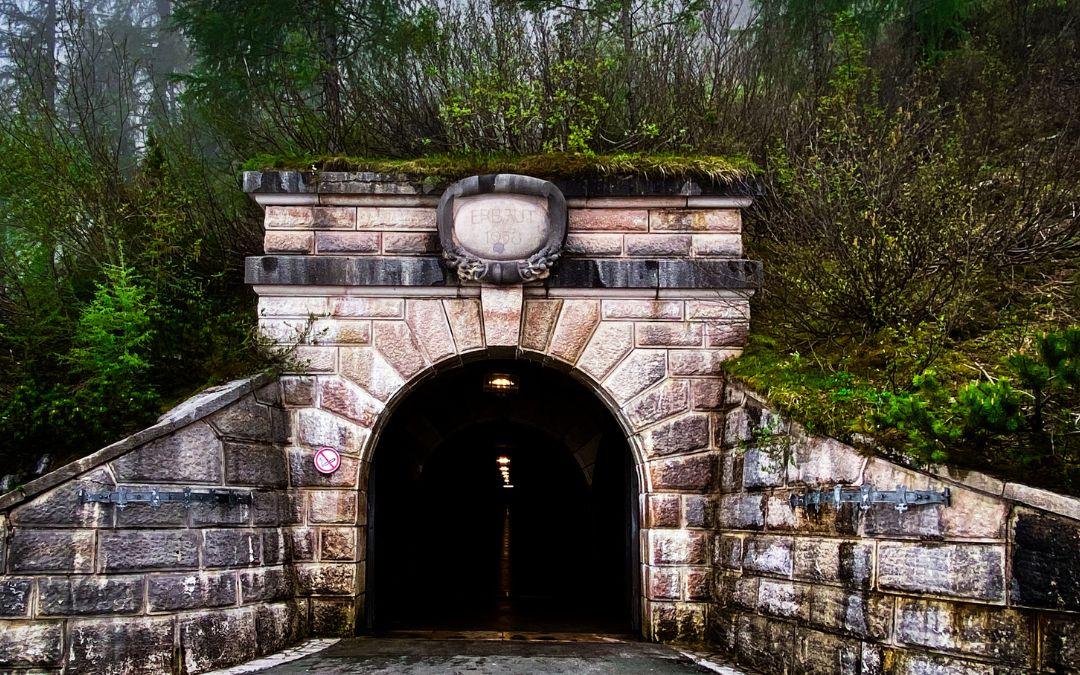

The interior of the Eagle's Nest gives an impression of the luxury that the Nazi leadership still afforded itself in 1943, when the end of the so-called Thousand-Year Reich was already in sight and German cities were drowning in a hail of bombs. The wood-paneled rooms and the monumental fireplace in the main room - the red marble was donated by Mussolini - are largely preserved in their original state, but now serve as a restaurant. The construction costs for the building, including the elevator system, access tunnel and Eagle's Nest road, amounted to 30 million Reichsmarks, which would be equivalent to around 154 million euros today.
Since the Americans left, the building has housed a restaurant offering Bavarian specialties, but unfortunately no cappuccino - this is available at the kiosk on the terrace, which I only noticed when we had to make our way back to the bus parking lot. There are also several souvenir stores selling typical memorabilia and regional products. A small exhibition by the Institute of Contemporary History provides basic information about the history of the Eagle's Nest.
3.3 Is a Visit to Kehlsteinhaus (Eagle's Nest) Worthwhile?
The main attraction of the Kehlsteinhaus is undoubtedly the view. On a clear day, you can enjoy a breathtaking panoramic view of the Alps and the Berchtesgadener Land region. But the weather in the mountains is unpredictable. During our visit, it was so foggy that hardly anything of the famous view could be seen. This diminished our overall impression considerably and made us doubt whether the visit was worthwhile.
Another aspect that spoiled our visit to the Eagle's Nest was the strong tourist focus of the place. The building, which was once a symbol of National Socialist power, now mainly serves as a large restaurant with souvenir stores. The price of 31.90 € for the bus ride and use of the brass-clad elevator seemed excessive to us. On the Eagle's Nest, we encountered almost exclusively foreign tourists, at whom marketing is obviously aimed.
For those interested in history, the information content on site is rather meagre. A short ascent to the Kehlstein summit is possible, but without the view, even this loses its appeal. All in all, the visit to the Eagle's Nest left us with the impression of an overpriced tourist trap, which stands in stark contrast to the valuable content of Dokumentation Obersalzberg.
Kehlsteinhaus ("Eagle's Nest") Info
- Address: Eagle's Nest, 83471 Berchtesgaden
- Directions: Special buses from Obersalzberg; the road is closed to private vehicles
- Admission prices: €31.90 (round trip)
- Opening hours: Daily from mid-May to mid-October (depending on weather conditions); the Eagle's Nest is closed in winter.
- Recommended duration of visit: 1 to 2 hours
- Update 9.2.2025: A video is currently circulating on the internet according to which the Free State of Bavaria has allegedly sold the Eagle's Nest. This is about Fake news.

4. My Recommendation
A visit to Berchtesgadener Land is undoubtedly a journey to one of the most spectacularly scenic regions in Germany, but one that is also deeply entangled in the dark history of National Socialism. Dokumentation Obersalzberg offers an excellent opportunity to take an intensive and reflective look at this history. A visit to the Eagle's Nest can be an interesting addition if the weather is fine, and you want to enjoy the view. I hope this article helps you plan your visit and gives you valuable insights into the significance of these historic places.
5. Recommended Books on the Topic
This brand new book (2024) on the Obersalzberg documentation examines the dual role of Obersalzberg as an idyllic retreat and as a center of Nazi power and crime. It offers an in-depth analysis of the historical developments and events at Obersalzberg, supported by extensive visual material and documents, and shows how the place became a symbol of the crimes of the Nazi regime. Here you can read exactly what you can expect in the exhibition.
Heike B. Görtemaker: Hitler's Court: The Inner Circle in the Third Reich and After*
In this book, historian Heike B. Görtemaker offers a detailed analysis of Hitler's inner circle and their key roles during the Third Reich, as well as their lives after the end of the war. She sheds light on the complex networks, loyalties, and power structures within the Nazi leadership and shows how members of the inner circle continued their connections and ideologies after 1945. The book combines meticulous research with vivid portraits of the central figures who supported Hitler's rule.
Heike B. Görtemaker: „Eva Braun: Life with Hitler“*
In this biography, Heike B. Görtemaker provides a multifaceted portrait of Eva Braun, Hitler's longtime companion, whom he married shortly before their suicide in the Führerbunker in Berlin. The book sheds light on her life, her relationship with Hitler and her role in the inner circle of the Nazi regime. Görtemaker paints a nuanced picture of Eva Braun that goes far beyond the usual clichés and shows how closely she was integrated into the structures and everyday life of the Third Reich.
While researching the village of Obersalzberg, Ulrich Chaussy came across Arthur Eichengrün, an important Jewish chemist and inventor who owned a vacation home on Obersalzberg where he spent every summer until well into the Nazi era. Chaussy combines biographical elements with historical context to show the impact of the Nazi dictatorship on Eichengrün's life and work, while also highlighting his remarkable contributions to science. Among other things, we have aspirin thanks to Eichengrün. Only available in German language.
In this book, Ulrich Chaussy sheds light on the effects of Hitler's presence on the population of Obersalzberg. He shows how the idyllic mountain village was destroyed by the Nazi regime's centralization of power and the associated construction projects, and documents the forced expropriations and the suffering of the local people. Chaussy combines scientific findings with personal stories to paint a comprehensive picture of the destruction of the homeland and the Führer cult at Obersalzberg.
6. Special Culinary Tip
After this hard-to-digest digression into the darkest chapter of German history, I recommend you take a detour to the Windbeutelbaron, which is just a short drive from the Obersalzberg visitor parking lot. Here you can relax on a wonderful panoramic terrace and choose your favorite from an incredible variety of the most delicious cream puffs, which are freshly opened every day. I opted for the version with vanilla ice cream and cherries. A poem! However, the café closes at 6 pm (last order at 5:30 pm). Be sure to plan ahead and arrive on time!
Inn Cafe Graflhöhe Windbeutelbaron Info
- Address: Scharitzkehlstraße 8, 83471 Berchtesgaden, Phone +49 8652 2577
- Directions: From the parking lot at the documentation center, drive to the traffic circle, then turn right towards Scharitzkehl. The Gasthaus-Cafe Graflhöhe "Windbeutelbaron" is on the right after approx. 3 km. The parking lot is located on Scharitzkehlstraße. You then have to walk a little way down the hill.
- Opening hours: Open from 10:00 to 18:00 (from October until 17:30),
closed on Wednesday and Saturday
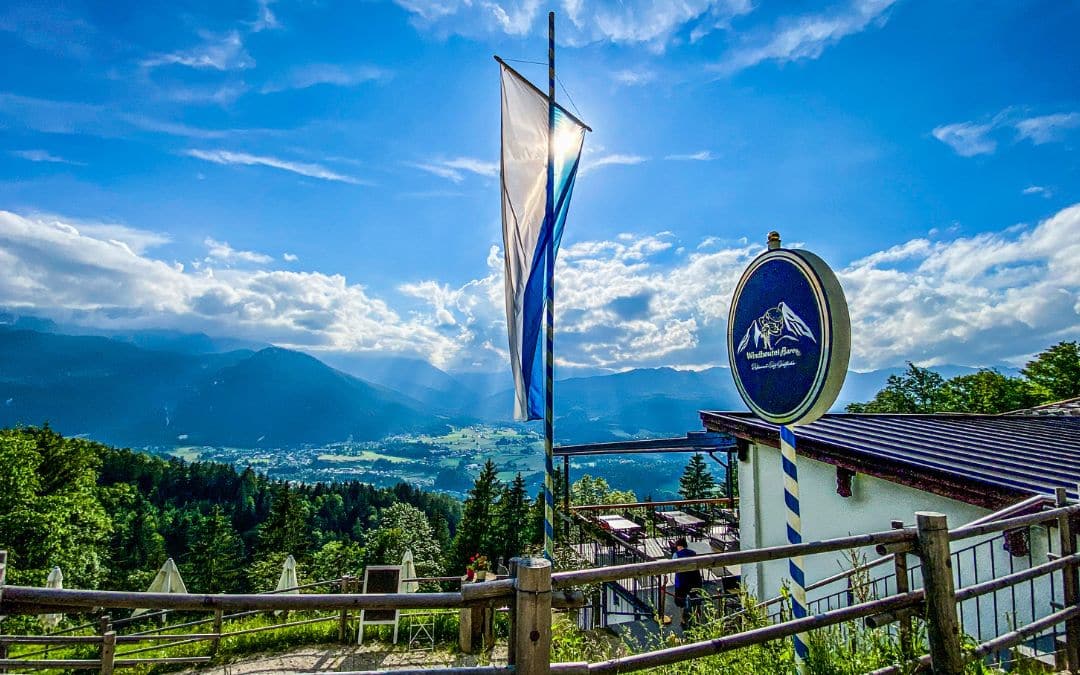




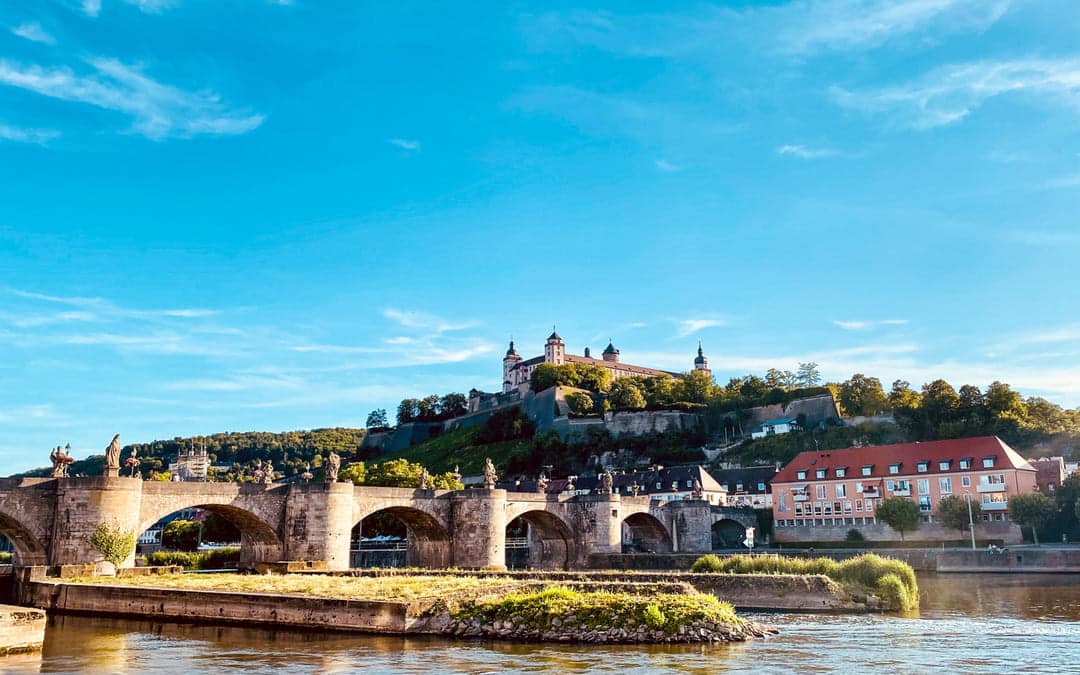
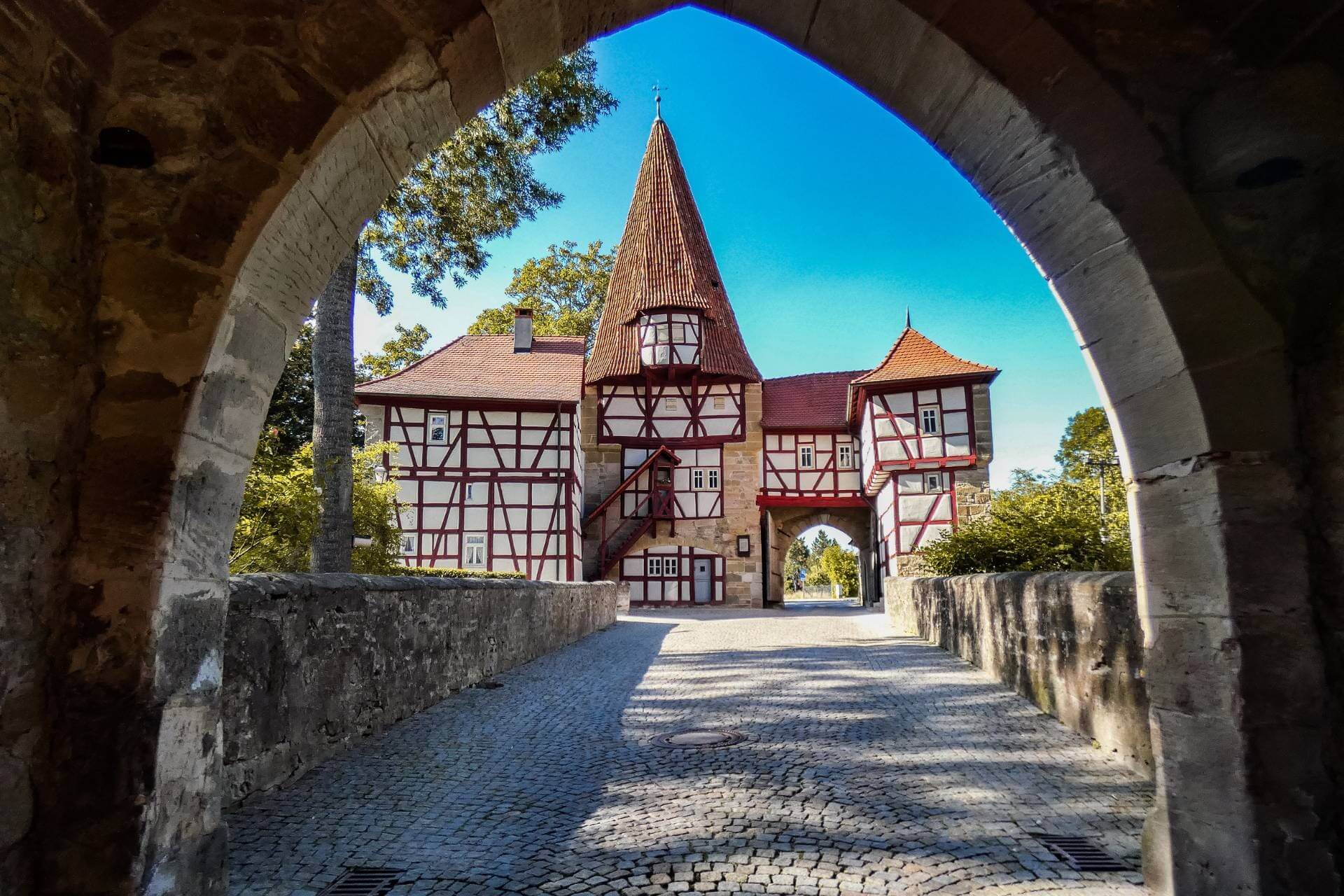
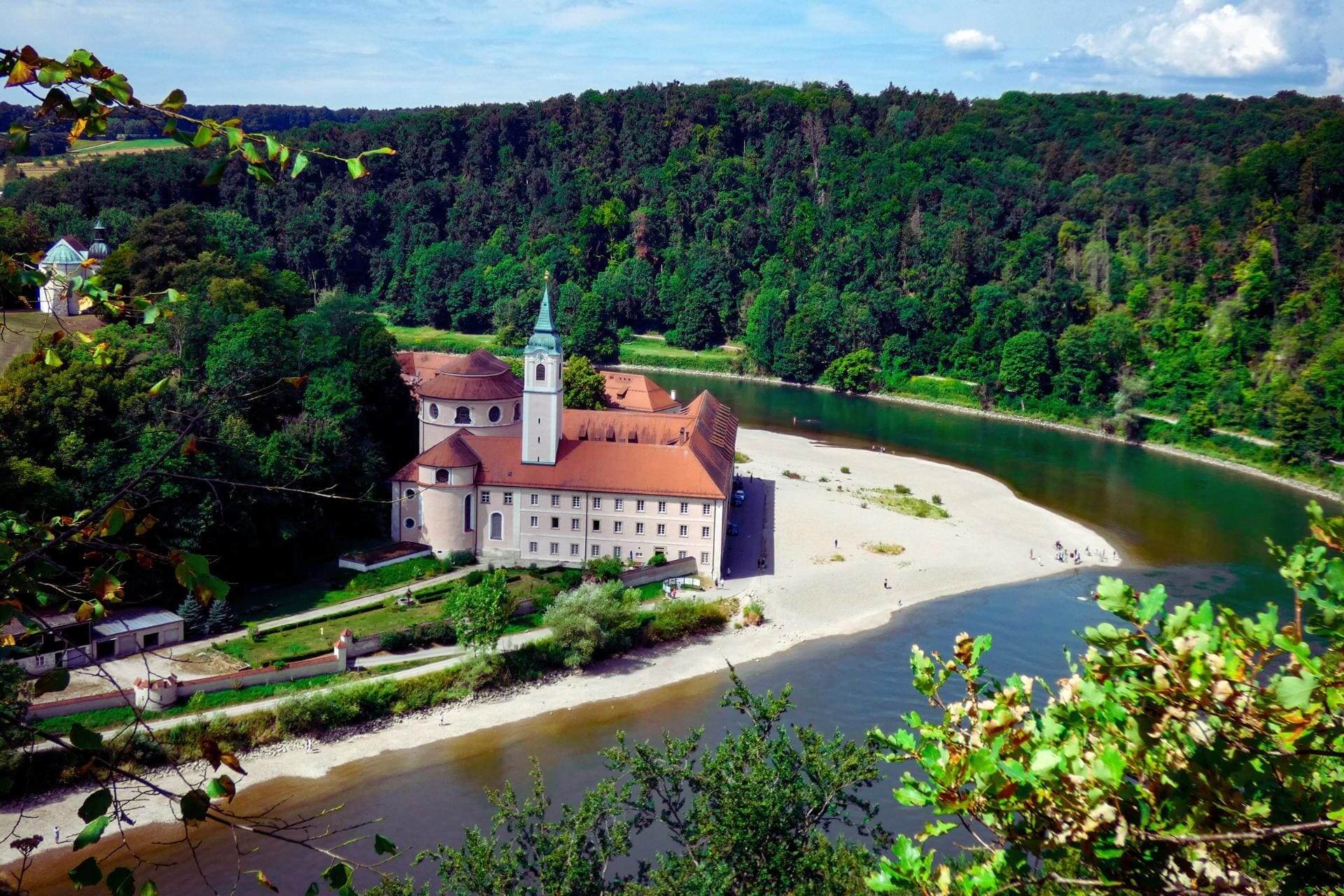


Dear Angelika
Thank you for your very informative article.
Personally, I think it is very important that such places continue to be made accessible to the public, as a memorial, as a reminder and for reflection. I'm not giving up hope that something will be learned from history after all.
The cream puffs look bombastic and super tasty. If I'm ever in the area, I'll visit the Obersalzberg and eat the cream puffs too.
Best regards, Birgit
Dear Birgit,
Thank you very much for your great comment, which I am very pleased about. I understand that certain places - such as the Berghof and the surrounding houses - were destroyed to prevent them from becoming places of pilgrimage. Like you, I think it is right and important to set up documentation centers in their place to promote a reflective view of historical events and encourage reflection. A visit to the Obersalzberg Documentation Center is highly recommended and should definitely be part of any visit to Berchtesgaden. The Windbag Baron too, of course 😉.
Warm regards
Angelika
Dear Angelica,
I really enjoyed reading your article, for me it has the perfect mix of interesting information, personal impressions and service information.
I'll definitely follow your tips if I ever get to the corner.
Best regards
Ilka
Dear Ilka,
Thank you very much for your lovely comment. I'm glad you like my post and that you find the information helpful. I hope you go to Berchtesgadener Land, which really is one of the most beautiful corners of Germany.
Best wishes and have a nice weekend!
Angelika
Dear Angelika, this is a wonderful article. I read it with great interest. It made me want to go on this trip and try out your tips.
Thank you very much for the insights into our history.
Kind regards from Anita ❤️🙋🏼♀️
Dear Anita,
I am very pleased that you like my article. The Berchtesgadener Land is fantastically beautiful and I also think it's worth looking into the depressing past. I hope you have the opportunity to come back to my tips.
Best wishes and have a nice weekend!
Angelika